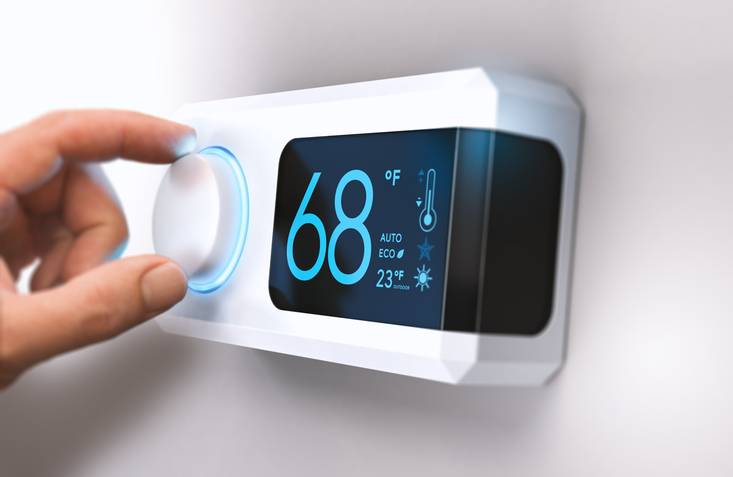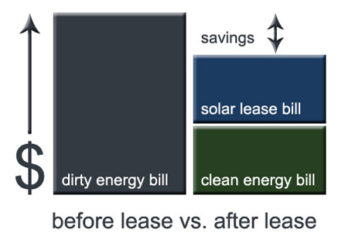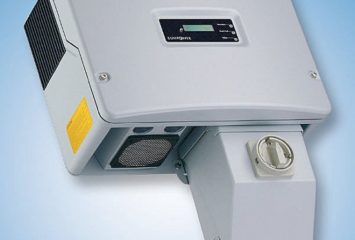7 Products That Optimize Your Solar Panel Output—and Decrease Your Energy Bill
Solar panels are the first step to sustainable living—and cutting down on your utility bills. However, you might not be getting your money’s worth with solar panels alone. There are a number of additional products that help with energy efficiency, from ceiling fans to home automation devices like smart thermostats. Here are six products you should add to your home if you have solar panels. With these additional devices, you can use less power from the grid, pay your system off faster, and possibly create a surplus of energy to sell back to electric companies.
1. Smart Thermostats
Over the past few years, tiny robots have been stepping into our homes to run households more cost-effectively and conveniently. Smart thermostats are one of these wonderful inventions, and they allow you to communicate with your heating and cooling system through an app. So if you forget to turn off the heating or air conditioning before you leave for work, you can simply use your phone to make needed changes.
The Nest Learning Thermostat is one of the best smart thermostats on the market because it takes intelligence to the next level. While other smart thermostats allow you to turn HVAC systems on and off from afar and create heating and cooling schedules, the Nest Learning Thermostat studies your habits and implements the most energy-efficient solutions. Say, for instance, you like to turn up the heat when you get up at 6:30 a.m. for work; your Nest will learn this schedule and warm your home to your ideal temperature before you get up. It’s this anticipation that makes these devices so neat. Plus, when you purchase the Nest Learning Thermostat, you may be able to get a rebate from your local energy company.
No matter which brand you buy, all smart thermostats enable you to keep a close watch on how much energy you use, when you use it, and how you can save. And with all the clean energy you’re getting from your solar system, your solar panels and smart thermostat will work in tandem beautifully.
2. Smart Lights
Lighting accounts for about 5% of energy usage in the average American home. To cut down on how much energy your lights draw from your solar panels, consider installing smart lights. No, we’re not talking about clap-on lights. We’re talking about lights you can dim, switch on, and turn off, all from an app. Philips is one of the best smart light brands out there. Their smart lights are energy efficient and can be turned off when you’re near or far—not just on your property. If you don’t want to get too technical, you can also upgrade to energy-efficient bulbs. They’re a little pricy initially, but their long lifespan and energy savings make up for it.
3. High Efficiency Windows, Caulk, and Drapery
Many homes lose the majority of their heat and air conditioning through windows and roofs. This can be fixed by installing double- or triple-paned windows, replacing weather stripping, or applying caulk. In fact, within one year of swapping out old weather stripping and caulk, you can offset the cost of the new materials through a lower utility bill. Heavy drapes are another cost-effective way to decrease the strain on your solar panels and reduce energy usage. They insulate your windows from drafts and prevent hot or cool air from escaping.
4. Smart Power Strips
The average American household has fifty electronics and appliances continuously plugged into the wall. Because they’re constantly plugged in, they can perpetually suck power from your home and solar panels, even when these appliances aren’t on. Smart power strips can solve that problem. These power strips sense when you’re not using electronics and shut off the power draw, allowing you to leave everything plugged in without consequence.
You might think the power use from unused appliances isn’t a big deal, but it adds up. The New York Times reported that a washing machine can draw four watts of power per hour even when turned off, a MacBook can suck forty-seven watts per hour when closed but charging, and a cable box can use twenty-six watts per hour when not in use. Those three power sources can drain 1,848 watts per day and over 55,000 watts per month.
Over the course of a year you could needlessly spend hundreds of dollars on electronics plugged into the wall. With the amount of money you would save, one of these nifty power strips can pay for itself in one or two months, and it will instantly put your solar energy to better use.
5. Smart Plugs
While smart power strips automatically cut off power draws, smart plugs allow you to control your electronics and appliances from wherever you are. Smart plugs, like those from Orvibo, are smart automation devices that allow you to use an app on your smart device to turn lights, appliances, coffee pots, hair straighteners, and anything else plugged in on or off. So, if you’re a little late running out the door, you can hop on your phone and turn off forgotten appliances and electronics. This can dramatically reduce the amount of solar energy these items use.
6. Motion-Sensing Lights
When you leave a room, you might forget to turn off the lights. But if you have motion-sensing lights, you won’t waste a watt of energy. For example, if you leave for vacation and forget to flip off a light, it could run nonstop for hours, draining your solar panel power storage. But motion-sensing lights will turn off on their own when you leave the house, so you don’t have to worry about wasting power. All you have to do is install a motion sensor that pairs well with your existing lighting. Motion sensors are best used with LED and incandescent lights. And since 90% of energy from an incandescent light bulb is emitted as heat,1 motion-sensing lighting can also reduce cooling costs during the summer.
7. Ceiling Fans
Air conditioning and heating takes up a lot of energy—about 48% of the average home’s energy budget.2 HVAC systems that run constantly, even when they don’t need to, can easily use up most, if not all, of your solar energy. Ceiling fans are a great energy-efficient remedy for cold and warm weather since they circulate air more effectively while using half the power. Set your ceiling fans to rotate clockwise during the winter to push warm air down and counterclockwise during the summer to distribute cool air around the room. While ceiling fans won’t cool or heat your home’s air, they still make rooms more comfortable and use less of your solar power. Check out top-rated ceiling fans from various brands to maximize your household’s energy efficiency.
Whether you’ve installed solar panels for environmental or cost-saving reasons, the seven devices above can help you use your solar energy more effectively. We hope you’ll see a reduction in your utility bill and optimal solar energy use.
*Solar Power Authority has conducted impartial research to recommend products. This is not a guarantee. Each individual’s unique needs should be considered when deciding on chosen products.
- Department of Energy, “When to Turn Off Your Lights”
- Department of Energy, “Heating and Cooling”


